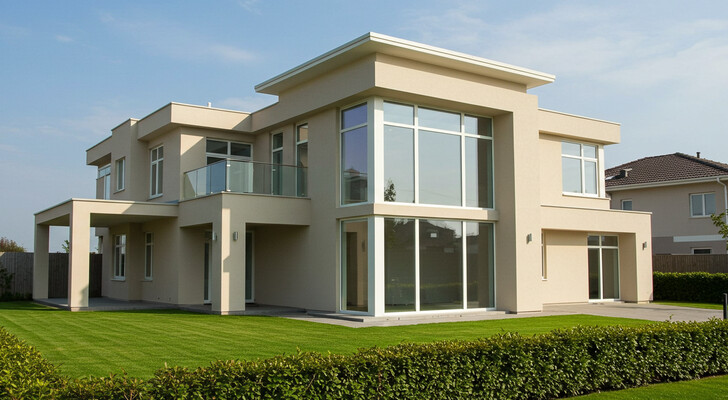The housing market’s got its quirks, and if you’ve been keeping an eye out for something that won’t break the bank, foreclosure homes might’ve already pinged your radar. In 2025, more Americans are quietly poking around this once-taboo corner of real estate. Why? Because while traditional listings come dressed up and full-priced, foreclosures tend to sit there quietly, a little rough around the edges, but packed with potential. Think of them as fixer-uppers with a discount tag. And let’s be real, who doesn’t love a deal, especially in this economy?

So what’s the real story behind foreclosures?
Buying a foreclosure home isn’t like scrolling Zillow at midnight dreaming of perfect countertops and staged living rooms. It’s a little more complicated, but also, possibly, more rewarding. These homes typically go on the market after the bank repossesses them, often due to missed mortgage payments. Once the house becomes the bank’s problem, they just want to offload it. Fast. That’s where buyers come in.
But here’s the thing: there’s a gamble involved. Some foreclosure homes are sold as-is, which could mean anything from a leaky roof to a family of raccoons living in the attic. You’ve got to be sharp, maybe even bring in a contractor before signing anything. Still, if you’re comfortable taking on a project or hiring people who are, it could save you thousands. It’s kind of like finding an antique at a garage sale. You need a little vision and a little nerve.
The upside: lower prices, less competition, more wiggle room
Let me put it this way. If a regular house in your dream neighborhood costs $400,000, there’s a decent chance a nearby foreclosure might go for $300,000 or less. That’s not pocket change. For first-time buyers, retirees wanting to stretch a pension, or investors with a rental plan in mind, it’s a golden opportunity. Plus, since foreclosures don’t exactly scream “move-in ready,” you might not have a ton of people lined up behind you offering over asking price. Which, in this market, is a welcome change.
And here’s a little secret. Some lenders even offer special loans like the FHA 203(k), which helps cover both the cost of the house and the repairs. So, instead of draining your savings fixing the place up, you roll it into your mortgage. Not bad, right?
But let’s not sugarcoat it. It’s not all smooth sailing
For every story about someone scoring a foreclosure and flipping it for double the price, there’s another about someone stuck with endless repairs and a case of buyer’s remorse. Title issues can crop up. Banks can be slow to respond. And depending on where you’re buying, you might even run into squatters or vandalism. That’s why it’s smart to work with a real estate agent who’s familiar with foreclosure sales, someone who knows how to navigate the red tape and spot a trap before you fall in.
There’s also the emotional weight. Walking into a house where someone lost everything? That can hit hard. It’s not something people talk about often, but it’s real. Still, many buyers say they feel better knowing the home’s getting a second life and being taken care of again.
Top 10 Cities to Buy Foreclosure Homes in the USA
Some cities just naturally have more foreclosure listings than others. As of this year, these spots are showing real promise for bargain hunters and investors alike:
- Detroit, Michigan – Still one of the most affordable major cities, with many foreclosure homes available for $60,000 to $120,000.
- Cleveland, Ohio – Solid single-family foreclosures can be found in the $70,000 to $130,000 range, often near downtown or revitalizing areas.
- Baltimore, Maryland – Offers older row homes and townhouses priced between $90,000 and $160,000, especially in up-and-coming neighborhoods.
- Tampa, Florida – Slightly pricier, but you can still find foreclosures around $150,000 to $220,000, often just outside the city center.
- Las Vegas, Nevada – Prices dipped a bit this year, and you can now find foreclosures for $180,000 to $260,000, especially in older suburban areas.
- Phoenix, Arizona – Inventory has gone up in 2025, with foreclosure homes averaging between $190,000 and $270,000, depending on the location and condition.
- Memphis, Tennessee – One of the best cities for investors, with many properties going for $80,000 to $140,000, and strong rental returns.
- Rockford, Illinois – A quiet Midwest gem, offering plenty of small homes and duplexes in the $60,000 to $110,000 range.
- Wichita, Kansas – Consistently affordable, with well-kept foreclosure properties between $90,000 and $150,000.
- St. Louis, Missouri – A mix of historic homes and fixer-uppers, with foreclosures ranging from $85,000 to $160,000, depending on the neighborhood.
Whether you’re a first-timer or an experienced buyer, these cities offer a range of price points and property conditions. You’ll still need to do your homework, but if you’re open to location flexibility, one of these spots might just be the sweet deal you’ve been hoping for.
Should you jump in now or wait it out?
That depends. If you’re sitting on some savings, have a good contractor in your corner, and can stomach a few surprises along the way, foreclosure homes in 2025 might just be your smartest move. But if the idea of unpredictable repairs and slower timelines makes you sweat, it’s okay to walk away. There’s no shame in playing it safe, especially when we’re talking about one of the biggest purchases of your life.
At the end of the day, it’s not about finding the perfect home. It’s about finding the right one for your situation. Foreclosures might not be flashy, but they can be full of promise. And sometimes, the best homes are the ones you bring back to life, piece by piece, wall by wall.
 © Copyright 2025 Shirabe-ru | Terms | Privacy Policy | Contact Us
© Copyright 2025 Shirabe-ru | Terms | Privacy Policy | Contact Us

